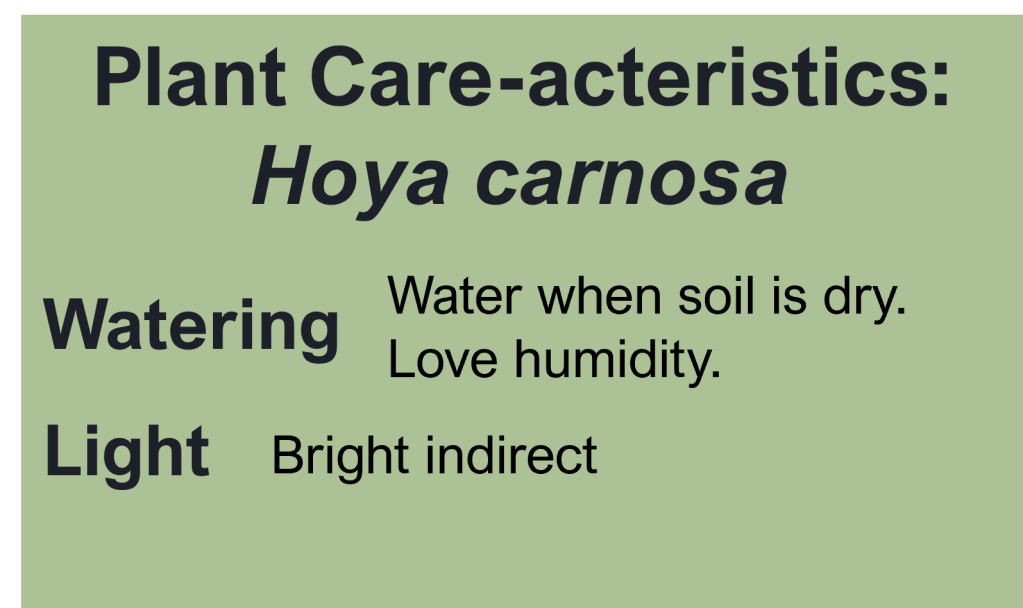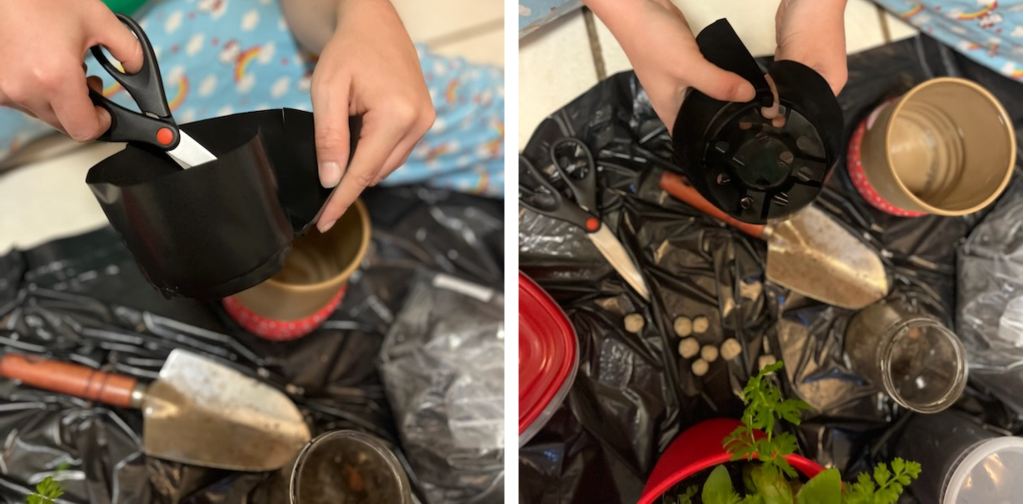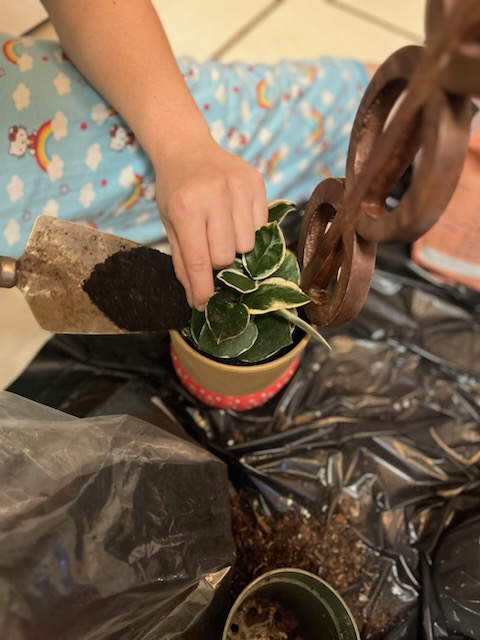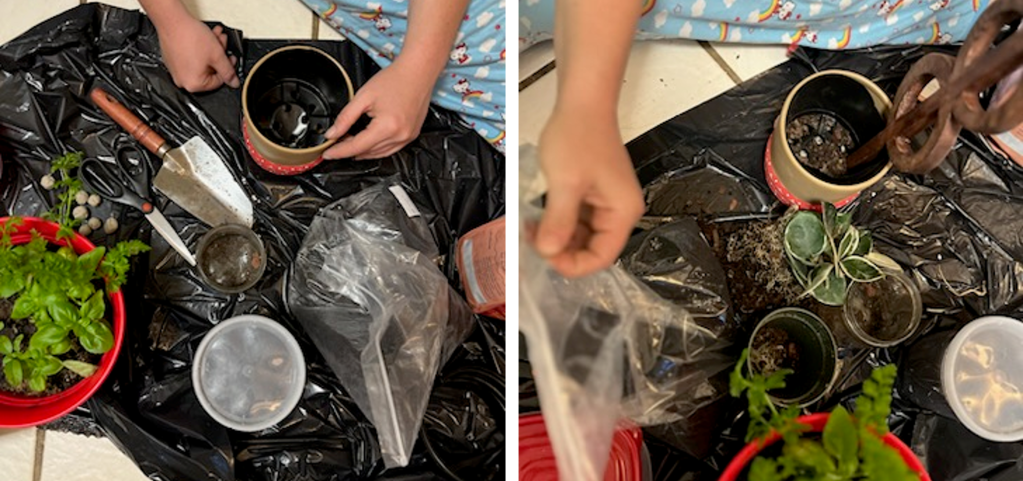My most recent plant purchase was a hoya carnosa, cultivar ‘Krimson Princess’, from one of my favorite local Pittsburgh establishments: Synthesis. Let’s talk about:
✿ Basic care for hoya carnosa
✿ Repotting a hoya carnosa
✿ DIY-ing a hoya carnosa habitat a.k.a. well-draining pot
Hoya Carnosa Plant Profile
According to my sources, hoya carnosa prefers high humidity, and regular watering in a well-draining soil, plus indirect but bright light. Mine is currently housed near (but not in!) a south-facing window next to my orchids where it will receive humidity from (1) the orchids daily mistings, (2) being near other plants, and (3) the large humidifer that is soon to be put nearby!
The jury is out on two things for my hoya carnosa:
(1) Will my Krimson Princess benefit from daily spritzing?
I’ve been told that hoya carnosa prefers high humidity; I’ve also heard it is succulent-like. My succulents tend not to enjoy damp leaves, but misting can be a great way to increase humidity especially in a very dry environment like an air conditioned apartment. The plan is to experiment without misting, especially since a humidifier is about to be installed.
(2) Will the current soil mixture be well-draining enough?
The Krimson Princess has currently been potted in my new standard indoor potting mix – a 1:4 mixture of worm castings and indoor-specific potting soil. I did not add perlite, although I have a bag if it should need to be added. But I’d prefer not to disturb the plant again too soon if I can avoid it, as apparently these plants don’t mind being a bit rootbound and being rootbound can actually encourage them to flower. Plus, this plant has been very particularly potted, as you’ll read below; I’m hoping this particular potting will be enough for great drainage that supports the healthiest of plant growth.

The Potting Process
Let’s Grow and Houseplant Hacks have taught me the virtue of being smart in how you pot up your houseplants. The indoors is a very different environment for a plant than out in a garden or the woods; consider, for example, that in a pot a single planting does not have the roots of other plants to interact with, nor does it have decomposing material to snack on unless the gardener adds it. Being smart about not just where, but also how, you put your plants in pots saves you and them a lot of trouble down the line.
I’ve already mentioned growing mediums here, but what about pots? For the hoya carnosa I wanted a gorgeous pot that also offered fantastic drainage without requiring me to pick up the pot too much, since there would be a trellis placed inside. When using a pot with a drainage hole over a catch tray, it can be beneficial to pick up the pot and pour out any excess water that dripped through. I wanted to avoid needing to do that, if possible.
Let’s Grow and Houseplant Hacks suggested keeping plants in the plastic pots with drainage that they are sosold in from nurseries, then placing that pot into a more aesthetically pleasing pot. To avoid having to lift out the inner pot so that roots don’t sit in water, the inner pot can be placed on top of lecca – clay pebbles, essentially, that will hold humidity without letting the plant sit in a bath. I decided to go with nursery pot + pretty pot + lecca.
The problem? The pot my hoya came in was too small to sit at a good height in my pretty snake pot, and the extra plastic draining pots I had were too wide to fit in the snake pot. Plus, I don’t have any lecca.
The solution? My partner helped me to cut a slit in the too-big plastic pots that acted to both (a) allow me to fold and shrink the width, and (b) hold the trellis in place.
The hole was cut down the side and through one of the drainage holes already in the pot toward the center of the pot bottom. This cut allowed me to fold the plastic over itself so that the width shrunk.
A second cut was made perpendicular to this first cut, widening the original drainage hole into a larger and squarer shape for the trellis stake to sit in.
I also chopped a good few inches off of the top of the pot. The idea here was that it would not show over the pretty snake pot’s top and there would still be room underneath for some sort of material to help with proper drainage. The trellis stake helped facilitate this by keeping the plastic pot in place once it was in the snake pot. In the base of the pot I placed some home-made natural clay pebbles from some leftover clay I had lying around.

The result was pretty and, hopefully, functional:


Once the trellis and inner pot were placed, it was planting time. As mentioned this hoya is currently living in a 1:4 worm casting to soil mix; as always, enough was placed in the inner pot that a small divot could be made where the plant would sit flush with the tip of the pot. I gently loosened the hoya‘s roots a tiny bit, being careful to avoid too much root breakage. Then I placed it in and topped off the soil using a trowel. I added some extra soil around the trellis stake to help it remain stable, packing that soil a tiny bit tighter than around the plant itself.
This will hopefully be a happy home for hoya carnosa ‘Krimson Princess’ – keep an eye out for updates here on Urban Habitat!
✿
Resources